#Zomato Delivery Data Scraping
Explore tagged Tumblr posts
Text
Web Scraping Zomato Delivery Data - The Ultimate Guide
Our custom and pre-built scrapers help you scrape Zomato delivery data from well-known websites quickly and affordably. For more information, contact Actowiz Solutions now!
#Web Scraping Zomato Delivery Data#Extract Zomato Delivery Data#Scrape Zomato Delivery Data#Zomato Delivery Data Scraping
0 notes
Text
Web Scraping Zomato Delivery Data - The Ultimate Guide
Our custom and pre-built scrapers help you scrape Zomato delivery data from well-known websites quickly and affordably. For more information, contact Actowiz Solutions now!
Know more: https://www.actowizsolutions.com/web-scraping-zomato-delivery-data-the-ultimate-guide.php'
#WebScrapingZomatoDeliveryData#Zomato Delivery Data Scraping#ExtractZomatoDeliveryData#ScrapeZomatoDeliveryData
0 notes
Text
Kroger Grocery Data Scraping | Kroger Grocery Data Extraction
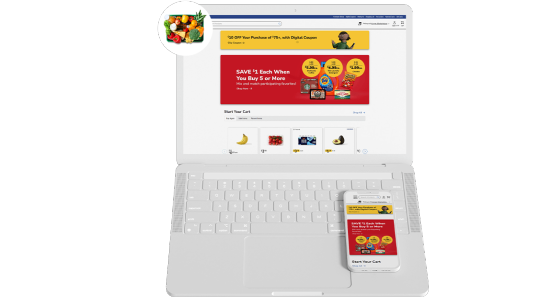
Shopping Kroger grocery online has become very common these days. At Foodspark, we scrape Kroger grocery apps data online with our Kroger grocery data scraping API as well as also convert data to appropriate informational patterns and statistics.
#food data scraping services#restaurantdataextraction#restaurant data scraping#web scraping services#grocerydatascraping#zomato api#fooddatascrapingservices#Scrape Kroger Grocery Data#Kroger Grocery Websites Apps#Kroger Grocery#Kroger Grocery data scraping company#Kroger Grocery Data#Extract Kroger Grocery Menu Data#Kroger grocery order data scraping services#Kroger Grocery Data Platforms#Kroger Grocery Apps#Mobile App Extraction of Kroger Grocery Delivery Platforms#Kroger Grocery delivery#Kroger grocery data delivery
2 notes
·
View notes
Text
Easily extract online food delivery data using the powerful Zomato API. Gain valuable insights, optimize operations, and make data-driven decisions for your business success.
For More Information:-
0 notes
Text
1 note
·
View note
Text
How to Scrape Restaurant Data from Zomato

In the digital age, data is a valuable asset, especially when it comes to businesses such as restaurants and pubs. However, understanding the significance of data for marketing, research, and analysis, many companies are eager to build comprehensive databases that encompass essential details about various establishments. One popular source for this information is Zomato, a prominent online platform that provides users with many information about restaurants, pubs, and other eateries. In this article, we will explore how to scrape restaurant data from Zomato to create a database of these establishments in India's eight major metro cities.
About Web Scraping
Web scraping is an automated process of gathering data from websites. It entails developing code that systematically navigates through web pages, locates pertinent information, and organizes it into a structured format, such as a CSV or Excel file. Nevertheless, it is of utmost importance to acquaint ourselves with the terms of service of the target website before commencing web scraping. This precautionary step ensures that the web scraping restaurants data procedure adheres to all rules and policies, preventing potential violations.
About Zomato
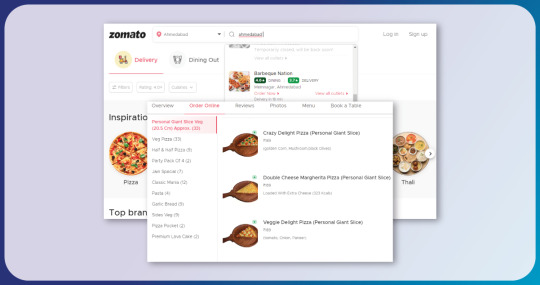
Zomato is a leading online platform that provides a comprehensive guide for users seeking information about restaurants, cafes, bars, and other eateries. It offers a wide range of details that can assist users in making informed decisions when dining out or ordering food. The platform goes beyond merely providing basic restaurant listings and delves into more intricate aspects that enrich the dining experience. One of the primary features of Zomato is its extensive database of restaurants, which spans various cities and countries. Users can access this information to explore their diverse culinary options. Each restaurant listing typically includes essential data, such as the establishment's name, location, cuisine type, and opening hours. Scrape Zomato food delivery data to gain insights into customer ordering behavior.
List of Data Fields

Restaurant Name
Address
City
State
Pin Code
Phone Numbers
Email
Web Scraping Using Python and BeautifulSoup
We have chosen Python, a highly versatile and popular programming language, for our web scraping restaurant data from Zomato project. To extract the required data from Zomato's web pages, we will leverage the power of the "Beautiful Soup" library. This Python library is specifically designed to parse HTML content efficiently, enabling us to extract relevant information seamlessly. With the combined strength of Python and Beautiful Soup, we can efficiently and precisely automate gathering the necessary data from Zomato's website.
Step-by-Step Guide to Scraping Restaurant Data from Zomato
1. Import Necessary Libraries:
When you Scrape Restaurants & Bars Data, make sure you have the required Python libraries installed. Install "requests" and "Beautiful Soup" libraries if not already in your Python environment.
2. Identify Target URLs:
Determine the URLs of Zomato's web pages containing the restaurant data for each of India's eight major metro cities. These URLs will serve as the starting points for our web scraping.
3. Send HTTP Requests:
Use the "requests" library to send HTTP requests to each identified URL. It will fetch the HTML content of the web pages, allowing us to extract relevant data.
4. Parse HTML Content:
Utilize "Beautiful Soup" to parse the HTML content retrieved from the web pages. The library will help us navigate the HTML structure and locate specific elements that contain the desired information, such as restaurant names, addresses, contact details, etc.
5. Extract Data and Store:
Once we have successfully located the relevant elements in the HTML, extract the required data seeking help from Food Delivery And Menu Data Scraping Services. Gather details such as restaurant names, addresses, city, state, PIN codes, phone numbers, and email addresses. Store this information in a structured format, such as a CSV file, database.
6. Data Cleaning and Validation:
After extracting the data, performing data cleaning and validation is crucial. This step involves checking for duplicate entries, handling missing or erroneous data, and ensuring data consistency. Cleaning and validating the data will result in a more accurate and reliable database.
7. Ensure Ethical Web Scraping:
It is essential to adhere to ethical practices throughout the web scraping process. Respect the terms of service of Zomato and any other website you scrape. Avoid overloading the servers with excessive requests, as this could cause disruptions to the website's regular operation.
8. Update the Database Regularly:
To keep the database current and relevant, consider setting up periodic updates. Restaurant information, such as contact details and operating hours, can change over time. Regularly scraping and updating the database will ensure users can access the most up-to-date information.
Important Considerations:
Respect Robots.txt: Before scraping any website, including Zomato, check the "robots.txt" file hosted on the site to see if it allows web scraping and if there are any specific rules or restrictions you need to follow.
Rate Limiting: Implement rate limiting to avoid overloading the Zomato server with too many requests in a short period.
Update Frequency: Regularly update your database to ensure the information remains relevant and up-to-date.
Conclusion: Building a database of restaurants and pubs in India's major metro cities from Zomato using Zomato scraper is an exciting project that requires web scraping skills and a good understanding of data management. By following ethical practices and respecting website policies, you can create a valuable resource that is helpful for marketing research, analytics, and business growth in the hospitality sector. Remember to keep the data accurate and updated to maximize its utility. Happy scraping!
know more:
#scrape restaurant data from Zomato#web scraping restaurants data#Food Delivery And Menu Data Scraping Services#Zomato scraper#Scrape Zomato food delivery data
0 notes
Text

Lensnure Solution provides top-notch Food delivery and Restaurant data scraping services to avail benefits of extracted food data from various Restaurant listings and Food delivery platforms such as Zomato, Uber Eats, Deliveroo, Postmates, Swiggy, delivery.com, Grubhub, Seamless, DoorDash, and much more. We help you extract valuable and large amounts of food data from your target websites using our cutting-edge data scraping techniques.
Our Food delivery data scraping services deliver real-time and dynamic data including Menu items, restaurant names, Pricing, Delivery times, Contact information, Discounts, Offers, and Locations in required file formats like CSV, JSON, XLSX, etc.
Read More: Food Delivery Data Scraping
#data extraction#lensnure solutions#web scraping#web scraping services#food data scraping#food delivery data scraping#extract food ordering data#Extract Restaurant Listings Data
2 notes
·
View notes
Text
Restaurant Trend Analysis with Food Delivery Data | ArcTechnolabs
Introduction
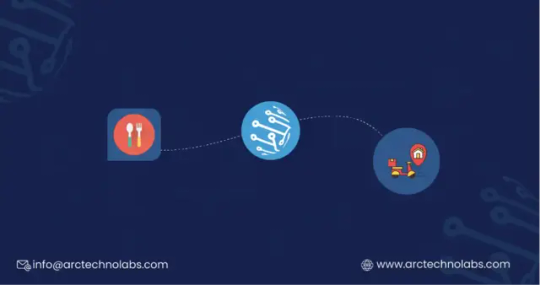
Food delivery isn’t just about convenience anymore—it’s a data goldmine. In fast-paced markets like the UAE and Singapore, food delivery platforms serve as real-time mirrors of restaurant performance, cuisine trends, pricing models, and consumer preferences.
ArcTechnolabs brings powerful visibility into this ecosystem with ready-made datasets scraped from top platforms such as Talabat, Deliveroo, Zomato, Careem NOW (UAE), GrabFood, and Foodpanda (Singapore).
If you're building a restaurant analytics platform, benchmarking food delivery pricing, or launching a virtual kitchen, our datasets deliver instant, structured, and geo-tagged intelligence.
Why UAE and Singapore?
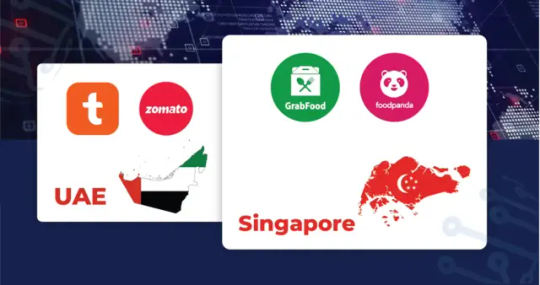
UAE: Burgeoning QSR chains, cloud kitchen boom, and highly competitive platforms like Talabat and Zomato.
Singapore: Tech-savvy urban population, high delivery frequency, and GrabFood/Foodpanda dominance.
Both countries represent a gold standard for online ordering behavior and digital F&B operations.
What ArcTechnolabs Provides
ArcTechnolabs delivers structured, high-quality datasets extracted from leading food delivery platforms. These datasets include the following key attributes:
-Restaurant Name: The exact listing name as it appears on food delivery platforms. -Cuisine Type: Cuisine categories such as Chinese, Indian, Fast Food, Arabic, etc. -Item Names: Menu items with details including portion size. -Item Prices: Both original and discounted prices. -Delivery Fee: Platform-specific delivery charges. -Ratings: Average customer rating along with total review count. -Delivery Time Estimate: Estimated delivery time as shown on the platform (e.g., 30–40 minutes). -Offer/Discount: Promotional offers such as percentage discounts, coupons, and bundle deals. -Scraped From: Platforms including Zomato, GrabFood, Deliveroo, Talabat, Foodpanda, and others.
Sample Dataset – UAE (Talabat + Zomato)
Restaurant: Al Baik Express
Cuisine: Arabic
Item: Chicken Broast
Price: AED 25.00
Rating: 4.5
Estimated Delivery Time: 30–40 minutes
Restaurant: Burgerizzr
Cuisine: Fast Food
Item: Double Burger
Price: AED 32.00
Rating: 4.3
Estimated Delivery Time: 20–30 minutes
Sample Dataset – Singapore (GrabFood + Foodpanda)
Restaurant: Boon Tong Kee
Cuisine: Chinese
Item: Steamed Chicken
Price: SGD 12.80
Rating: 4.6
Estimated Delivery Time: 25–35 minutes
Restaurant: Crave Nasi Lemak
Cuisine: Malay
Item: Chicken Wing Set
Price: SGD 9.90
Rating: 4.4
Estimated Delivery Time: 20–25 minutes
Use Cases for Food Delivery Data
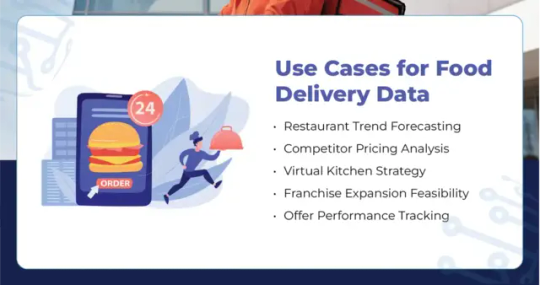
1. Restaurant Trend Forecasting
Track top-performing cuisines, trending dishes, and delivery frequency by city.
2. Competitor Pricing Analysis
Compare QSR pricing across cities/platforms to optimize your own.
3. Virtual Kitchen Strategy
Use delivery times, cuisine gaps, and demand signals to plan kitchen placement.
4. Franchise Expansion Feasibility
Measure brand performance before launching in new areas.
5. Offer Performance Tracking
Analyze how discount combos affect order ratings and visibility.
How ArcTechnolabs Builds These Datasets
Platform Selection: We target top food delivery apps across UAE and Singapore.
Geo-Based Filtering: Listings are segmented by city, area, and delivery radius.
Smart Scraping Engines: Handle pagination, time delays, JavaScript rendering.
Normalization: Menu names, price formatting, cuisine tagging, and duplication removal.
Delivery ETA Tracking: Extract exact delivery time estimates across dayparts.
Data Refresh Options
ArcTechnolabs offers flexible data refresh options to match your operational or analytical needs:
Hourly Updates
Channel: API or JSON feed
Format: Real-time data access
Daily Updates
Channel: Email delivery or direct download
Format: CSV or Excel
Weekly Trend Reports
Channel: Shared via email or Google Drive
Format: Summary reports with key insights
Target Cities ArcTechnolabs focuses on high-demand urban areas for precise, city-level analysis.
UAE:
Dubai
Abu Dhabi
Sharjah
Ajman
Al Ain
Singapore:
Central
Tampines
Jurong
Bukit Batok
Ang Mo Kio
Customization Options You can tailor your dataset to meet specific business goals or research parameters. Customization options include:
Cuisine Filter: Focus on select cuisines such as Indian, Arabic, or Chinese.
Platform Filter: Limit data to a specific platform like Talabat or GrabFood.
Time of Day: Filter listings by lunch, dinner, or early morning availability.
Restaurant Type: Choose data only from cloud kitchens or dine-in restaurants.
Discount Status: Include only restaurants currently offering deals or promotions.
Benefits of ArcTechnolabs’ Pre-Scraped Datasets

Fast deployment
City-wise trend segmentation
Competitor menu benchmarks
Multi-platform support
Clean & normalized structure
Get Started in 3 Steps
Request your sample dataset
Choose your region, platform & cuisine focus
Start receiving insights via API or scheduled exports
Visit ArcTechnolabs.com to request a demo or consultation.
Conclusion
The future of food delivery is data-driven. Whether you're analyzing dish popularity, price competitiveness, or delivery performance— ArcTechnolabs equips you with plug-and-play food delivery datasets that transform static restaurant listings into live market intelligence.
Get smart. Get fast. Get food trend insights—powered by ArcTechnolabs.
Source >> https://www.arctechnolabs.com/restaurant-trends-with-food-delivery-dataset.php
#ReadyMadeDatasets#RealTimeRestaurantAnalyticsDataset#ZomatoDatasetForRestaurantAnalysis#RestaurantTrendAnalysisDatasets#RestaurantPerformanceDataScraping#FoodDeliveryPricingDatasets#WebScrapingServices
0 notes
Text
📊 Unlock Deeper Food Delivery Intelligence with City-Wise Menu Trend Analysis Using Zomato & Swiggy Scraping API

In today's dynamic food delivery landscape, staying relevant means understanding how preferences shift not just nationally—but city by city. By harnessing the power of our #ZomatoScrapingAPI and #SwiggyScrapingAPI, businesses can extract granular data to reveal #menu trends, #dish popularity, #pricing variations, and #regional consumer preferences across urban centers.
Whether you're a #restaurant chain planning regional expansion, a #foodtech startup refining your offerings, or a #marketresearch firm delivering insights to clients—real-time, city-specific menu analytics are essential.
With our robust scraping solution, you can: ✔️ Analyze which items are trending in key metro areas ✔️ Adjust your menu for hyperlocal appeal ✔️ Monitor competitor offerings and pricing strategies ✔️ Predict demand patterns based on regional consumption behavior
This level of #data granularity not only boosts operational efficiency but also helps refine marketing strategies, product positioning, and business forecasting.
0 notes
Text

Our custom and pre-built scrapers help you scrape Zomato delivery data from well-known websites quickly and affordably. For more information, contact Actowiz Solutions now!
Know more: https://www.actowizsolutions.com/web-scraping-zomato-delivery-data-the-ultimate-guide.php'
#WebScrapingZomatoDeliveryData#Zomato Delivery Data Scraping#ExtractZomatoDeliveryData#ScrapeZomatoDeliveryData
0 notes
Text
WHAT ARE THE STEPS TO EXTRACT UBER EATS FOOD DELIVERY DATA?

Why are data on food delivery important? Believe it or not, most people have gone through this: being too exhausted or busy to prepare a meal for themselves or go out to eat, so instead, they grab their smartphones and open food delivery apps. Easily order your preferred meals online and savor them in the coziness of your home with amazing discounts.
Restaurants that don't provide risk in Uber Eats Delivery App Data Scraping slipping behind their competitors due to the expanding demand and the cultural environment. The merchants must adjust to these consumer behavior changes to recollect a reliable income stream and remain competitive.
You can extract food delivery information using X-Byte, a Zero-code web scraping service, whether you're a customer or a business owner. If a business is new to online food delivery and wish to study more, a web scraping service can help with market research.
Web Scraping service can assist customers, mainly consumers and gourmets passionate about proposing delectable cuisine, finding excellent restaurants in large quantities, and expanding their repertoire of suggestions.
How to Create Uber Eats Scraper?
Using X-Byte, you can make a scraper in 3 simple steps. Launch the package, type the URL into the search field, and click "start." The built-in browser in X-Byte will then display the webpage. Step 1: Choose the data you want.Before beginning the web scraping service operation, you can discharge the popup windows. Close the popups in a similar manner that you will when visiting a website by ticking "Browse" in the upper right corner. Visitors to the Uber Eats site must join up first. Select "Sign in" from the browse mode menu to sign into your Uber account. Then, you may go to the scraping mode by selecting the "Browse" button again. You can check that in the middle is a panel with the title "Tips." When you pick "Auto-detect website page data," the robot will automatically scan the page and choose the information you are most likely interested in. The data chosen are displayed in the preview areas after the auto-detection. Depending on the requirement, you may eliminate any unnecessary information field.
Step 2: Create the Scraper's WorkflowOnce you tick "Create workflow," the workflow will be created and located on the left side of your screen.
You can occasionally discover that the outcomes of the auto-detect only partially satisfy your requirements. Don't worry; once you set up the XPath, you can still choose the missing dataset. The data is situated via Xpath.
The information gathered from the primary homepage is inadequate for you to learn about meal delivery or to comprehend what foods in your area are appetizing. What's this? Additionally, X-Byte provides web scraping service to extract certain meal delivery information from detail pages.
Uber Eats' website requires two tasks to get what you need.
Let's first examine the process you just create. Select each restaurant picture and access their webpage to obtain information from the restaurant's detail pages. Then, choose which sections you wish to scrape. To scrape the restaurants URLs, you must include a process beforehand. Click "Tip" and select the "A" tag to get a link's URL. Then choose "extract URL" and click on a restaurant image.
Secondly, click "Run" after saving the job. After that, X-Byte will start gathering data for you. Users who do not pay can only retrieve data from local devices. Cloud data extraction will also be available. Accessible to premium users. You can also set the process to execute every week, every day, or every hour. Save cookies before doing the job, remember.
Third, open X-Byte, choose "+ New" > "Advanced Mode," Please copy and paste the URLs. You retrieved from the preceding operation and then clicked "Save." The newly built process allows you to choose whatever element you want to physically or automatically scraped from the detail pages.
Step 3: Execute the Additional Task and Scrape the dataYou may download or export the information on food deliveries to a database, a JSON, an XLS, a CSV, or an HTML file. When the process is well-built, save the second job and choose "Run." ConclusionThe growth of online food delivery has made it more advantageous for customers and businesses to scrape data on food delivery
#food data scraping services#grocerydatascraping#restaurant data scraping#restaurantdataextraction#fooddatascrapingservices#food data scraping#zomato api#web scraping services#grocerydatascrapingapi#Uber Eats APIs#Uber Delivery API#Scrape Uber Eats restaurant data
1 note
·
View note
Text
Monitor Competitor Pricing with Food Delivery Data Scraping

In the highly competitive food delivery industry, pricing can be the deciding factor between winning and losing a customer. With the rise of aggregators like DoorDash, Uber Eats, Zomato, Swiggy, and Grubhub, users can compare restaurant options, menus, and—most importantly—prices in just a few taps. To stay ahead, food delivery businesses must continually monitor how competitors are pricing similar items. And that’s where food delivery data scraping comes in.
Data scraping enables restaurants, cloud kitchens, and food delivery platforms to gather real-time competitor data, analyze market trends, and adjust strategies proactively. In this blog, we’ll explore how to use web scraping to monitor competitor pricing effectively, the benefits it offers, and how to do it legally and efficiently.
What Is Food Delivery Data Scraping?
Data scraping is the automated process of extracting information from websites. In the food delivery sector, this means using tools or scripts to collect data from food delivery platforms, restaurant listings, and menu pages.
What Can Be Scraped?
Menu items and categories
Product pricing
Delivery fees and taxes
Discounts and special offers
Restaurant ratings and reviews
Delivery times and availability
This data is invaluable for competitive benchmarking and dynamic pricing strategies.
Why Monitoring Competitor Pricing Matters
1. Stay Competitive in Real Time
Consumers often choose based on pricing. If your competitor offers a similar dish for less, you may lose the order. Monitoring competitor prices lets you react quickly to price changes and stay attractive to customers.
2. Optimize Your Menu Strategy
Scraped data helps identify:
Popular food items in your category
Price points that perform best
How competitors bundle or upsell meals
This allows for smarter decisions around menu engineering and profit margin optimization.
3. Understand Regional Pricing Trends
If you operate across multiple locations or cities, scraping competitor data gives insights into:
Area-specific pricing
Demand-based variation
Local promotions and discounts
This enables geo-targeted pricing strategies.
4. Identify Gaps in the Market
Maybe no competitor offers free delivery during weekdays or a combo meal under $10. Real-time data helps spot such gaps and create offers that attract value-driven users.
How Food Delivery Data Scraping Works
Step 1: Choose Your Target Platforms
Most scraping projects start with identifying where your competitors are listed. Common targets include:
Aggregators: Uber Eats, Zomato, DoorDash, Grubhub
Direct restaurant websites
POS platforms (where available)
Step 2: Define What You Want to Track
Set scraping goals. For pricing, track:
Base prices of dishes
Add-ons and customization costs
Time-sensitive deals
Delivery fees by location or vendor
Step 3: Use Web Scraping Tools or Custom Scripts
You can either:
Use scraping tools like Octoparse, ParseHub, Apify, or
Build custom scripts in Python using libraries like BeautifulSoup, Selenium, or Scrapy
These tools automate the extraction of relevant data and organize it in a structured format (CSV, Excel, or database).
Step 4: Automate Scheduling and Alerts
Set scraping intervals (daily, hourly, weekly) and create alerts for major pricing changes. This ensures your team is always equipped with the latest data.
Step 5: Analyze the Data
Feed the scraped data into BI tools like Power BI, Google Data Studio, or Tableau to identify patterns and inform strategic decisions.
Tools and Technologies for Effective Scraping
Popular Tools:
Scrapy: Python-based framework perfect for complex projects
BeautifulSoup: Great for parsing HTML and small-scale tasks
Selenium: Ideal for scraping dynamic pages with JavaScript
Octoparse: No-code solution with scheduling and cloud support
Apify: Advanced, scalable platform with ready-to-use APIs
Hosting and Automation:
Use cron jobs or task schedulers for automation
Store data on cloud databases like AWS RDS, MongoDB Atlas, or Google BigQuery
Legal Considerations: Is It Ethical to Scrape Food Delivery Platforms?
This is a critical aspect of scraping.
Understand Platform Terms
Many websites explicitly state in their Terms of Service that scraping is not allowed. Scraping such platforms can violate those terms, even if it’s not technically illegal.
Avoid Harming Website Performance
Always scrape responsibly:
Use rate limiting to avoid overloading servers
Respect robots.txt files
Avoid scraping login-protected or personal user data
Use Publicly Available Data
Stick to scraping data that’s:
Publicly accessible
Not behind paywalls or logins
Not personally identifiable or sensitive
If possible, work with third-party data providers who have pre-approved partnerships or APIs.
Real-World Use Cases of Price Monitoring via Scraping
A. Cloud Kitchens
A cloud kitchen operating in three cities uses scraping to monitor average pricing for biryani and wraps. Based on competitor pricing, they adjust their bundle offers and introduce combo meals—boosting order value by 22%.
B. Local Restaurants
A family-owned restaurant tracks rival pricing and delivery fees during weekends. By offering a free dessert on orders above $25 (when competitors don’t), they see a 15% increase in weekend orders.
C. Food Delivery Startups
A new delivery aggregator monitors established players’ pricing to craft a price-beating strategy, helping them enter the market with aggressive discounts and gain traction.
Key Metrics to Track Through Price Scraping
When setting up your monitoring dashboard, focus on:
Average price per cuisine category
Price differences across cities or neighborhoods
Top 10 lowest/highest priced items in your segment
Frequency of discounts and offers
Delivery fee trends by time and distance
Most used upsell combinations (e.g., sides, drinks)
Challenges in Food Delivery Data Scraping (And Solutions)
Challenge 1: Dynamic Content and JavaScript-Heavy Pages
Solution: Use headless browsers like Selenium or platforms like Puppeteer to scrape rendered content.
Challenge 2: IP Blocking or Captchas
Solution: Rotate IPs with proxies, use CAPTCHA-solving tools, or throttle request rates.
Challenge 3: Frequent Site Layout Changes
Solution: Use XPaths and CSS selectors dynamically, and monitor script performance regularly.
Challenge 4: Keeping Data Fresh
Solution: Schedule automated scraping and build change detection algorithms to prioritize meaningful updates.
Final Thoughts
In today’s digital-first food delivery market, being reactive is no longer enough. Real-time competitor pricing insights are essential to survive and thrive. Data scraping gives you the tools to make informed, timely decisions about your pricing, promotions, and product offerings.
Whether you're a single-location restaurant, an expanding cloud kitchen, or a new delivery platform, food delivery data scraping can help you gain a critical competitive edge. But it must be done ethically, securely, and with the right technologies.
0 notes
Text
Scrape Zomato Food Reviews Data for Important Insights
Scrape Zomato Food Delivery Reviews Data for insightful restaurant reviews data, providing valuable insights for food enthusiasts and businesses alike.
#ScrapeZomatoFoodReviewsData#ZomatoRestaurantReviewsDataScraping#ScrapeZomatoData#ZomatoFoodReviewDataCollection#ExtractZomatoReviewData
0 notes
Text
Dynamic Pricing & Food Startup Insights with Actowiz Solutions
Introduction
In today’s highly competitive food and restaurant industry, the difference between success and failure often lies in the ability to adapt swiftly to market dynamics. Investors and food startups are leveraging data intelligence to fine-tune pricing models, optimize profitability, and enhance operational performance. At the forefront of this transformation is Actowiz Solutions, a leading provider of web scraping and data intelligence services.
Why Dynamic Pricing is a Game-Changer
Dynamic pricing, also known as real-time pricing, allows businesses to adjust prices based on demand, competitor prices, customer behavior, and other external factors. For food startups, this can be the difference between overstocked perishables and sold-out menus.
Key Benefits of Dynamic Pricing:
Increased Revenue: Charge premium rates during peak demand.
Inventory Optimization: Reduce food waste by adjusting prices on soon-to-expire items.
Improved Competitiveness: Stay ahead by responding to competitor price changes in real-time.
Enhanced Customer Segmentation: Offer tailored pricing based on user location or purchase history.
How Actowiz Solutions Powers Dynamic Pricing
Actowiz Solutions enables startups and investors to collect vast amounts of real-time data from food delivery apps, restaurant aggregators, grocery platforms, and market listings. This data is structured and delivered via API or dashboards, enabling easy integration into pricing engines.
Actowiz Dynamic Pricing Data Flow:
flowchart LR A[Food Delivery Platforms] --> B[Web Scraping Engine - Actowiz Solutions] B --> C[Real-Time Price Data Aggregation] C --> D[Analytics Dashboard / API] D --> E[Dynamic Pricing Models for Startups] D --> F[Investor Performance Insights]
Example Datasets Extracted:
Menu prices from Zomato, Uber Eats, DoorDash, and Swiggy
Grocery prices from Instacart, Blinkit, and Amazon Fresh
Consumer review sentiment and delivery time data
Competitor promotional and discount trends
Performance Tracking with Actowiz Solutions
Beyond pricing, performance tracking is vital for both investors and startups. Actowiz Solutions offers detailed KPIs based on real-time web data.
Key Performance Metrics Offered:
Average Delivery Time
Customer Ratings and Reviews
Menu Update Frequency
Offer Usage Rates
Location-wise Performance
These metrics help investors evaluate portfolio startups and allow startups to fine-tune their services.
Sample Performance Dashboard:
Metric Value Trend Avg. Delivery Time 34 mins ⬇️ 5% Avg. Customer Rating 4.3/5 ⬇️ 2% Promo Offer Usage 38% ⬇️ 10% Menu Item Refresh Rate Weekly Stable New User Acquisition +1,200/mo ⬇️ 15%
Real-World Use Case
Case Study: A Vegan Cloud Kitchen Startup in California
A vegan cloud kitchen startup used Actowiz Solutions to scrape competitor pricing and delivery performance from platforms like DoorDash and Postmates. Within 3 months:
Adjusted pricing dynamically, increasing revenue by 18%
Reduced average delivery time by 12% by identifying logistics gaps
Gained deeper insight into customer sentiment through reviews
The investor backing the startup received real-time performance reports, enabling smarter funding decisions.
Infographic: How Actowiz Helps Food Startups Scale
graph TD A[Raw Market Data] --> B[Actowiz Data Extraction] B --> C[Cleaned & Structured Data] C --> D[Startup Analytics Dashboard] D --> E[Dynamic Pricing Engine] D --> F[Performance Reports for Investors]
Why Investors Trust Actowiz Solutions
Actowiz Solutions doesn’t just provide data—it offers clarity and strategy. For investors:
See real-time performance metrics
Evaluate ROI on food startups
Identify trends before they emerge
For startups:
Get actionable data insights
Implement real-time pricing
Measure what matters
Conclusion
Dynamic pricing and performance tracking are no longer luxuries in the food industry—they're necessities. With Actowiz Solutions, both investors and startups can make informed decisions powered by accurate, real-time data. As the food tech space becomes more competitive, only those who leverage data will thrive.
Whether you’re funding the next unicorn or building it—Actowiz is your partner in data-driven growth. Learn More
0 notes
Text
How to Scrape Zomato Delivery Apps Data: A Comprehensive Guide
In the burgeoning world of food delivery, platforms such as the Zomato Food Delivery App have become paramount. This blog shows How to Scrape Zomato Delivery Apps Data.
know more: https://medium.com/@ridz.2811/how-to-scrape-zomato-delivery-apps-data-a-comprehensive-guide-4f3f67f038d8
#ZomatoFoodDeliveryAppScraping#ScrapeZomatoDeliveryAppsData#ZomatoAppScraper#FoodDeliveryAppsScraping#ExtractRestaurantMenuData
0 notes